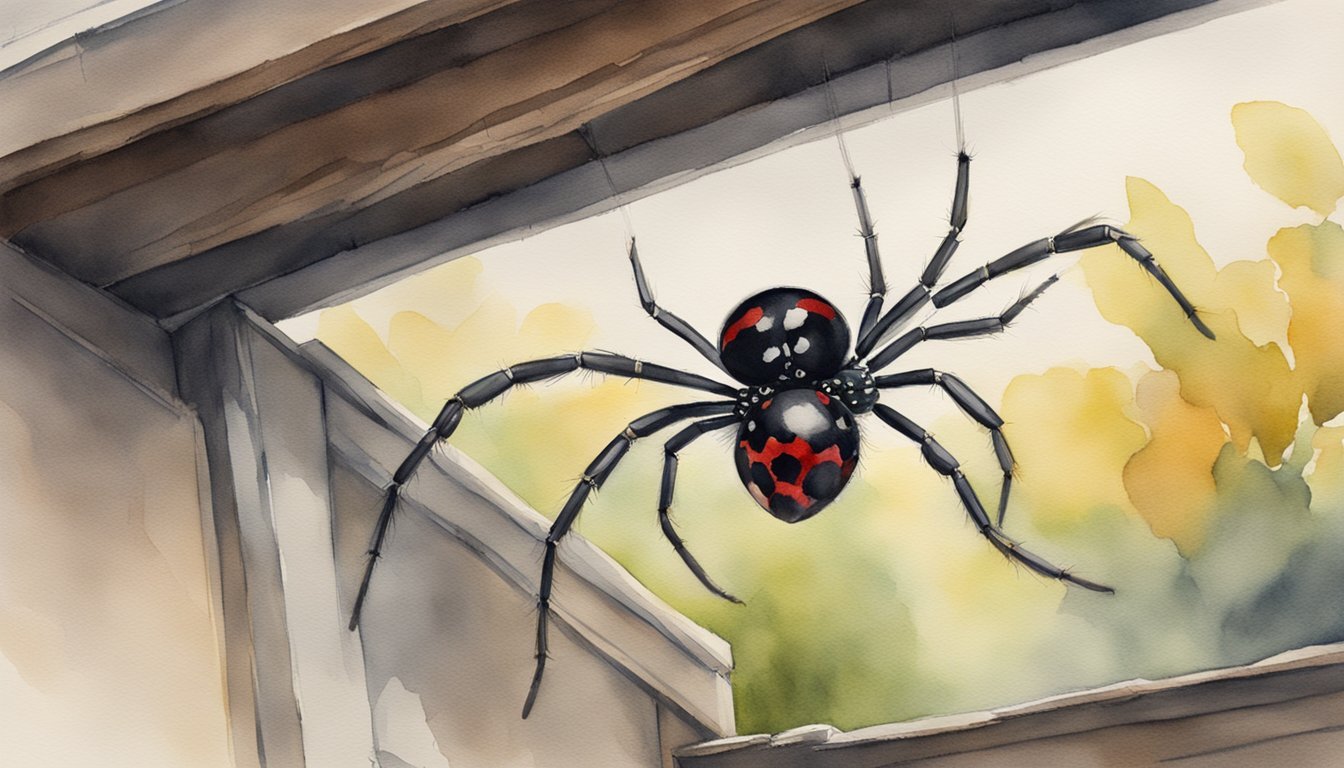Understanding Black Widow Spider Identification and Habitat

The ability to identify black widow spiders and understand their habitat is crucial for recognizing the potential risks associated with these venomous arachnids. In this section, we will discuss the characteristics that make black widows distinguishable and the regions they commonly inhabit.
Recognizing Black Widow Spiders
Black widow spiders, particularly the females, are known for their distinctive appearance. A key feature is the red hourglass-shaped marking on the underside of their abdomen. These spiders belong to the genus Latrodectus, which includes species such as the southern black widow (Latrodectus mactans), the western black widow (Latrodectus hesperus), and the northern black widow (Latrodectus variolus). While both male and female black widows have venom, the female’s is considerably more potent. These spiders are typically jet-black, though some may be brown.
Habitats Across the Regions
Black widow spiders thrive in warm and dry climates throughout regions in North America, from the southern United States to parts of Canada. They craft strong, irregular webs where they lie in wait for prey. Habitats can range from natural settings such as under logs and rocks to human-made environments including garages and basements. Black widows prefer undisturbed locations, where the sturdy silk of their webs provides a lasting residence. They play a significant role in controlling pest populations due to their diet and hunting methods.
Black Widow Venom: Effects and Treatment
Black widow spiders are notorious for their potent venom, which can cause severe symptoms, and the treatment available aims to alleviate these effects.
The Potency of Black Widow Venom
The venom of a black widow contains neurotoxins, particularly alpha-latrotoxin, which is responsible for the condition known as latrodectism – the term for illness caused by a widow spider’s bite. Female black widows are typically more venomous than their male counterparts, and their bites introduce venom that affects the nervous system. The bite of a black widow is considerably more dangerous for small children, the elderly, and those with compromised health, as their ability to recover is often less robust.
Symptoms and Treatment of Bites
When a person is bitten by a black widow, symptoms can range from mild to severe. Initially, the site of the bite might show a red mark and swelling, followed by pain and cramping, which can extend to the chest and abdomen if the diaphragm is affected. Other symptoms might include nausea, sweating, muscle aches, and paralysis of the diaphragm, which can interfere with breathing. In severe cases, symptoms can be life-threatening, although deaths from black widow bites are rare.
Treatment centers on symptom management and can include pain relievers and muscle relaxants to address muscle aches and cramps. In some instances, antivenom is administered to counteract the effects of the venom. First aid measures, such as applying an ice pack to the bite site and keeping the affected limb elevated, are encouraged while seeking medical attention.

